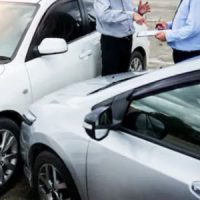Electronic Evidence in Car Crash Claims

Tech-savvy King County jurors respond very well to electronic evidence. Moreover, most King County courtrooms have large HDTV screens, and jurors expect to see something on these screens. Furthermore, such evidence is often more legally reliable than eyewitness or other kinds of evidence. Therefore, electronic evidence could be the key to meeting the burden of proof in a civil case and obtaining maximum compensation for serious injuries.
Compelling evidence doesn’t appear out of thin air. A Seattle car accident attorney must know how to locate this evidence, and perhaps more importantly, know how to properly present this evidence in court. If a lawyer does these things well, and does them correctly, a trial often isn’t necessary. A strong claim forces an insurance company to settle an injury case out of court, and on victim-friendly terms.
Event Data Recorder
The evidence in a car crash claim is a lot like a jigsaw puzzle. Generally, a combination of the police accident report and eyewitness statements, including the victim’s own testimony, provides most of the pieces.
An EDR, which is a motor vehicle’s onboard computer, often provides the critical missing pieces of the puzzle. EDRs track and record information like:
- Steering angle,
- Vehicle speed,
- Engine RPM, and
- Brake application.
EDRs also track other operational data, which is why mechanics use them to diagnose car trouble. That’s also why a Seattle personal injury lawyer can use these devices to prove negligence, or a lack of care.
Assume Sarah hit Tom as he was crossing the street. If the EDR from Sarah’s vehicle reveals that she didn’t steer out of the way or decrease her speed just before she hit Tom. Sarah was almost certainly negligent.
This critical evidence, which could be the difference between maximum compensation and settling for less, is often unavailable unless a lawyer acts quickly and decisively.
If the insurance company destroys a wrecked vehicle, which is usually the case, any physical evidence the car contained is gone. So, a lawyer must send a spoliation letter ASAP. This letter creates a legal duty to preserve all potential evidence for future inspection.
Future inspection isn’t a given. Washington has very strong vehicle information privacy laws. A personal injury lawyer usually cannot touch an EDR unless a judge issues a court order.
Surveillance Video
A picture really is worth a thousand words, especially if it appears on one of the aforementioned HDTV screens during a critical part of the trial.
Preparation is usually key. At least one video camera, usually a security camera, covers almost every intersection and stretch of highway in Seattle. Many times, the footage adds little or nothing to a case. But that one camera usually makes a difference. Legal teams who give up the search don’t find the gold nugget.
Preparation is key in court as well. Surveillance video is only admissible if an attorney proves the camera was in good working order and someone, usually the camera’s owner or operator, testifies that the footage clearly and accurately recorded the crash.
The payoff is high. Surveillance cameras, unlike people, are never incorrect or biased. Cameras see what they see. Therefore, this evidence is almost bulletproof in court.
Work With a Hard-Hitting King County Lawyer
Injury victims are entitled to substantial compensation. For a free consultation with an experienced personal injury lawyer in Seattle, contact the Emerald Law Group. We do not charge upfront legal fees in these matters.
Source:
vtd.uscourts.gov/sites/vtd/files/BURDEN%20OF%20PROOF%20-%20PREPONDERANCE%20OF%20EVIDENCE.pdf
